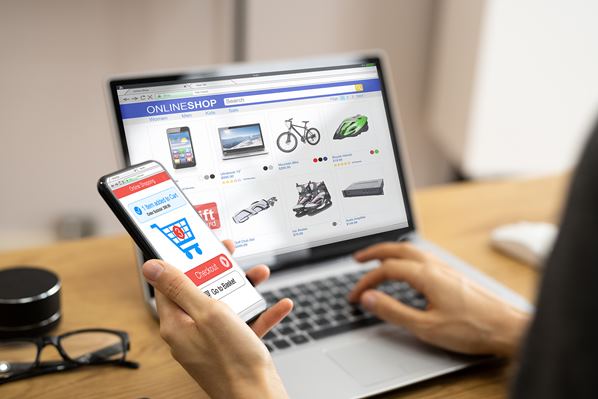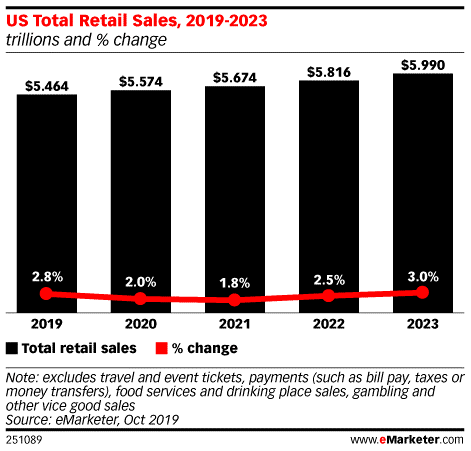
With the advent of online shopping, customers can now buy anything they want from anywhere at any time. As a result, brands and retailers have to be increasingly aware of reaching consumers through different channels.
This calls for a new approach to doing business, one that considers online shopping and brick-and-mortar stores. With omnichannel eCommerce, you have access to two channels that can bring your customers together. It mixes your offline and online presence and provides consumers with different ways to buy goods and services, whereas Nembol is another good option to multiply your online presence and grow traffic and sales!.
This article will give you recommendations on what you need to do to implement the best omnichannel approach for your business.
What Is Omnichannel eCommerce?
Omnichannel is the combination of all sales channels for one business under one website. With omnichannel eCommerce, companies can reach their customers more efficiently than ever before by targeting the right customer at the right time on the right channel.
How Can You Implement Omnichannel eCommerce For Your Business?
The nature of your business would influence the best omnichannel eCommerce approach. Nevertheless, the following best practices apply to every business:
1. Analyze The Current Marketing Tactic
The first step in creating a new strategy for omnichannel eCommerce is to audit your current one to see what worked and what didn’t. At the same time, email marketing tools can help you develop a stronger plan. In some instances, the most relevant insights can be obtained from your customer’s feedback on your social channel or eCommerce website.
Keep an eye on all of your platforms and brainstorm new approaches to your current marketing strategy. When developing an omnichannel strategy, put yourself in the shoes of the customer.
2. Improve Your Mobile Usability
The widespread use of smartphones is a major force behind omnichannel marketing. Today, mobile devices account for a significant portion of the client journey. According to a new eMarketer report, mobile devices will account for nearly half of eCommerce purchases by 2022 (see the graph below).

So, optimize your mobile site and provide the information in a way that works well. An excellent mobile website should be minimalistic, simple to use, and aid visitors in their buying journeys.
3. Create Highly Targeted Buying Guides
A buying guide is a great way to increase revenue in any omnichannel eCommerce store. The more a consumer knows about a product before they buy, the higher chance they’ll complete the purchase. That’s why your customer should be provided with detailed information about every single product you sell.
Moreover, eCommerce brands use buyer’s guides to educate, inform and influence shoppers. For example, an eCommerce fashion brand might create a buyer’s guide explaining how to wear different items in its fall collection. This buyer’s guide would include:
- Print advertising.
- Social media content (like videos and photos on Instagram).
- Product pages that encourage readers to click through to the full buying guide.
4. Make The Most Of Coupons And Discounts
Omnichannel marketing is about reaching the target audience at every touchpoint. This means that the same message of your brand should be consistent across all channels, whether it be digital or physical. It also requires efficient use of promotions and discounts for greater customer engagement. Moreover, you will be able to keep track of all of your business actions using listing tools.
Over half (59%) of shoppers are still influenced by digital coupons, according to Invesp. Discounts and free shipping can also convince an unsure buyer. How can you make good use of promos and discounts in omnichannel marketing? It’s simple: by integrating them into your overall strategy.
5. Embrace The Power Of User-Generated Content
The world of marketing is changing, and the line between customers and brands is becoming blurred. The traditional break between online and offline marketing is quickly fading into the past as customers expect personalized experiences across all channels.
Marketers are under pressure to meet rising customer expectations through omnichannel outreach—and they’re finding that leveraging user-generated content (UGC) can be one of the most effective ways to do so.
User-generated content (UGC) is content created by consumers for consumers. One of the essential aspects of the current omnichannel marketing environment is to create a strong connection with your customers and make them feel like they are an integral part of the brand. This is where UGC comes into play. If you can find a way to use your marketing strategy effectively, you will have a substantial competitive advantage.
6. Incorporate Corporate Social Responsibility (CSR) Into Your Omnichannel Strategy
Aligning your business with a cause is one of the easiest ways to generate more brand awareness and loyalty. Your brand will seem more trustworthy, authentic, and reliable to consumers.
In addition, there are many tangible perks for aligning your company with a cause. Consumers want to support companies they believe in, and aligning yourself with a cause can increase sales or lead to positive press coverage!
As reported by NielsenIQ, 56% of worldwide consumers are willing to spend more to support companies that share their social values with them. It’s also vital to fully commit to your chosen cause, to develop content around it, and to use it to establish a community around your brand. This can serve as a solid foundation for your complete omnichannel approach if done effectively.
Conclusion
The evolution of online shopping has created a need for businesses to offer an omnichannel customer experience. As an SMB, it’s crucial to have a multichannel approach for your eCommerce site. By using multiple channels, it’s possible to reach more customers and boost overall sales. However, implementing an omnichannel strategy isn’t easy.
Businesses must ensure that they’re offering their products across all channels while still meeting customers’ needs. However, we’ve provided you with some valuable tips so you can implement an effective omnichannel eCommerce strategy for your business today!
About the Author
 Efrat Vulfsons is the Co-Founder of PR Soprano and a data-driven marketing enthusiast, parallel to her soprano opera singing career. Efrat holds a B.F.A from the Jerusalem Music Academy in Opera Performance.
Efrat Vulfsons is the Co-Founder of PR Soprano and a data-driven marketing enthusiast, parallel to her soprano opera singing career. Efrat holds a B.F.A from the Jerusalem Music Academy in Opera Performance.




